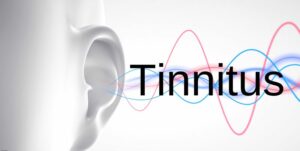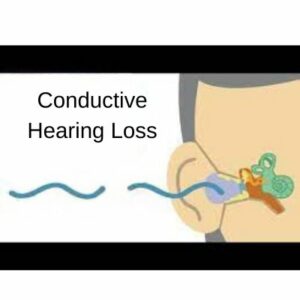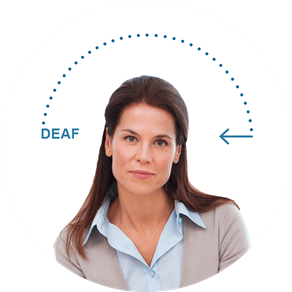About Widex Audibility Extender.
Losing the ability to hear high frequency sounds compromises speech understanding and the appreciation of music and nature’s sounds.
For many hearing aid users, the primary motivation for wearing hearing aids is to improve speech perception. However, for people with severe or profound hearing loss, it is often not possible to restore high-frequency hearing by means of conventional amplification. This has been attributed to dead regions in the cochlea with no functioning inner hair cells (Moore, 2001) and limitations of the hearing aid in the form of insufficient maximum gain, the occurrence of feedback before the necessary amplification level is reached, and reduced output due to the use of thin-tube open-mould fittings (Kuk, 2007). Whatever the reason(s), limited access to high-frequency cues is critical, as this can have a detrimental effect on both speech perception and the perception of environmental sounds, such as an alarm or bird song.
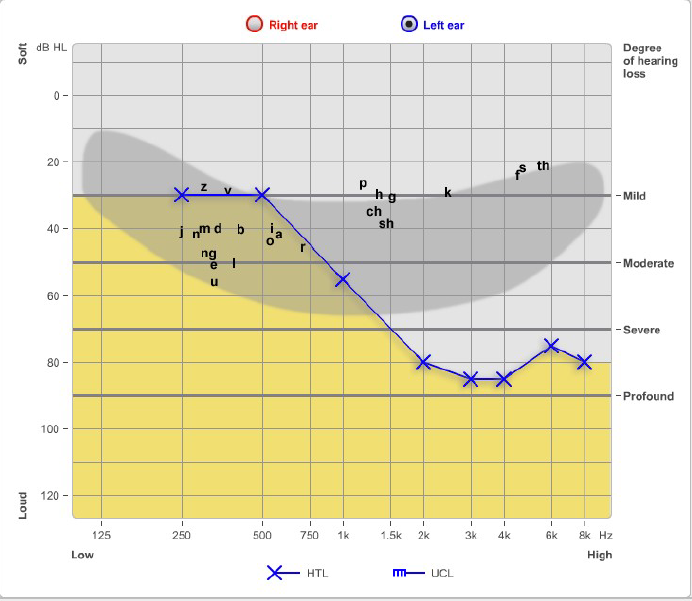
Traditionally, persons with severe high frequency hearing losses have been challenging for hearing care professionals to satisfy completely. Providing sufficient audibility in the high hearing frequencies without the wearer experiencing the “occlusion effect” has been a major obstacle. The introduction of open-fit hearing aids eliminated the occlusion issue. But, even with the sophistication of modern active feedback cancellation protocols, the openness of the hearing aid fitting limits the available maximum gain in the high frequency area. The available gain provided by the hearing aids may not be enough for some hearing aid wearers. Also, some individuals with “dead” regions of the cochlea don’t tolerate the amplification of the high frequencies well. This intolerance is due to distortion within the hearing amplification system inself. An alternative solution may be warranted to assist individuals with these types of hearing loss so that the information contained in the high frequencies can be made audible again.
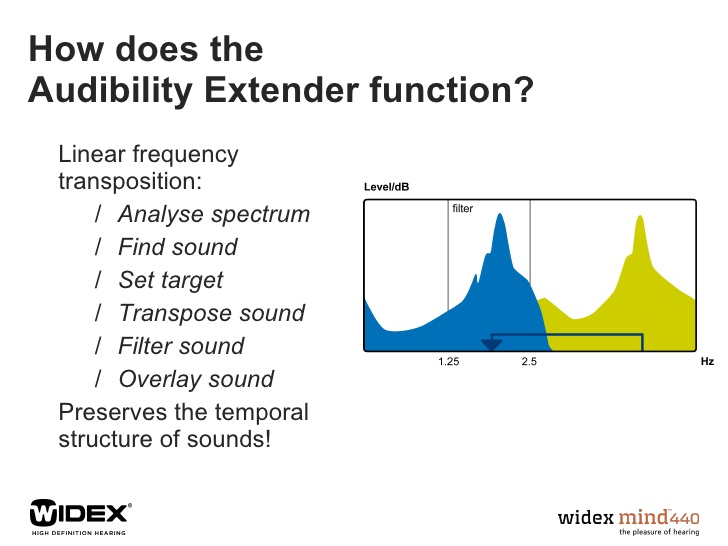
An alternative solution is to move or transpose the unaidable high frequency sounds that a user cannot hear to a lower frequency area where there is more usable hearing available. The Widex Audibility Extender in Widex hearing aids linearly transposes those unusable high frequency sounds to a lower frequency region for better audibility.
The Widex Audibility Extender feature helps extend the range of audibility for the hearing aid wearer.
This technology moves inaudible environmental sound from a region of the wearer’s hearing that they cannot hear to a lower region of frequencies that will allow the wearer to hear. For example: a bird singing, a doorbell or microwave ding, music, etc.
Widex Audibility Extender is available on all Widex hearing aids dispensed by HearSource.
Linear Frequency Transposition
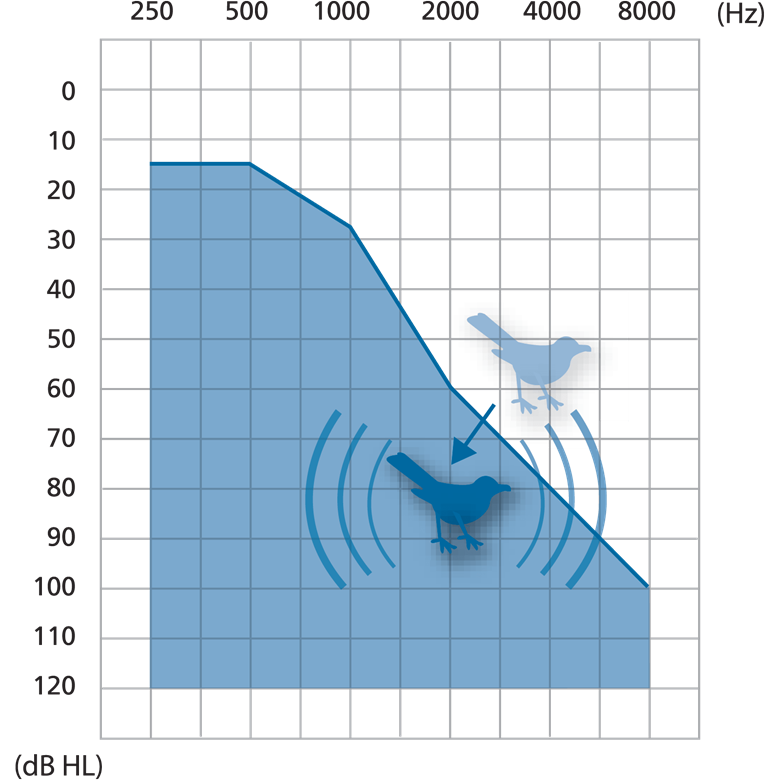
The Widex Audibility Extender uses “linear frequency transposition“ technology. It is linear in the sense that one section of frequencies is moved or shifted to a lower range set of frequencies without compressing or distorting the sound signal.
In this way, the important harmonic relationship of sound is retained. In practical terms, this means that, for instance, your alarm clock will still sound like the same alarm clock.
The Widex Audibility Extender has been tested with adults as well as children by Widex research facilities, including ORCA-USA. We have positive results from these clinical trials suggesting that the linear frequency transposition facilitates better speech intelligibility and access to environmental sounds.
High frequency sounds are important for speech perception
Research has shown that being cut off from high frequency sounds may have a negative impact on speech perception in adults.
It is also clear that a high frequency hearing loss may result in a delay or failure of normal language development in children.
Being able to discriminate sounds in spoken language depends a great deal on the extent to which you have access to high frequency sounds. For many consonants, the spectral energy is primarily located in the high frequency region.
Phonemes such as /s/, /∫/, /t/, /z/ are therefore difficult to discriminate if you have a hearing loss in the high frequencies. In spoken English being able to discriminate /s/ and /z/ is important because these phonemes mark plurals, possessions and contractions as well as the third person singular tense.
Also being able to distinguish similar sounding words such as sip – tip –ship – chip and but – bus – bust will be impaired with high frequency hearing loss. This will also have an effect on language production in terms of proper pronunciation of for instance /s/ sounds in spoken language.
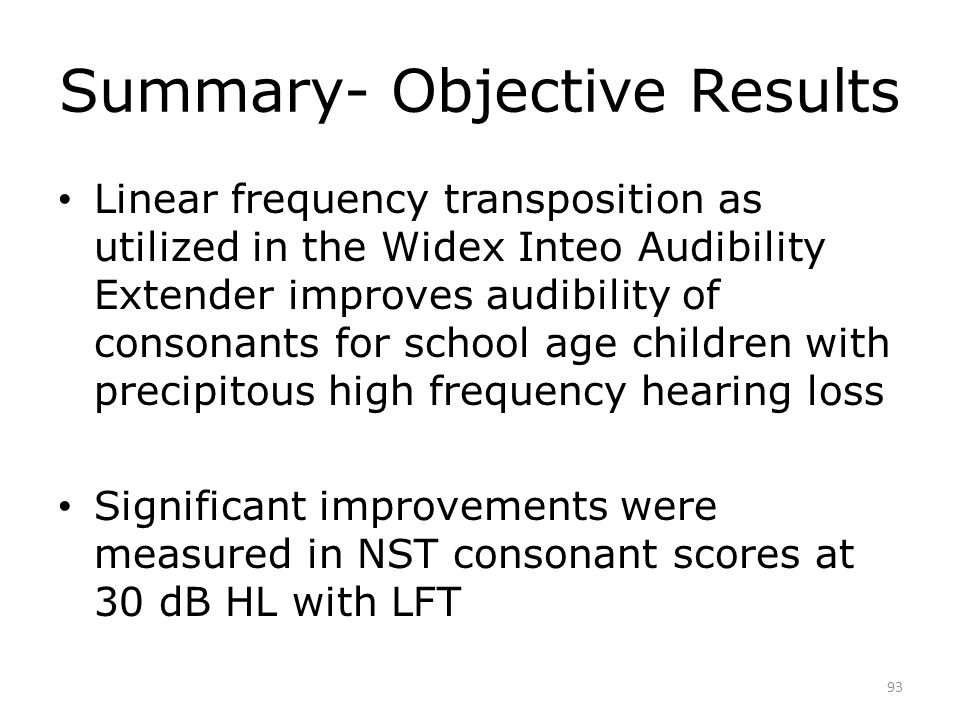
Personal Audibility Extender
The Widex hearing aid manufacturer fitting software is called “COMPAS GPS”. The Audibility Extender feature is available for all programs and input types.
With 10 start frequencies and available in all hearing aid technology levels, and with an option for the Audibility Extender to be active for all input types when listening using specific programs, Widex provides their clients even more with their Audibility Extender technology.
AUDIBILITY EXTENDER CASE STUDY
Five native English speaking subjects aged 54 to 83 years (mean age of 68 years) were evaluated. These subjects were part of a larger study that evaluated the efficacy of the Audibility Extender.
Four of the five test subjects were experienced hearing aid users. The subjects were seen every two weeks for three visits.
These test subjects were chosen as “case studies” because they could not identify the /s/ sound at a soft level of 30 dB HL using the master hearing aid program.
This study showed that by using the audibility of the /s/ or /sh/ sound as a criterion to determine the start frequency with Audibility Extender, Widex was able to provide additional audibility of high frequency sounds to the hearing aid wearer while accounting for individual differences. This resulted in an improved consonant recognition in quiet and appreciation of everyday sounds such as bird songs and music listening.
For more information on Widex Audibility Extender, please call 1-800-416-2434, Monday thru Friday, 9:00 a.m. to 9:00 p.m. Eastern Time (6:00 a.m. to 6:00 p.m. Pacific Time) USA.

